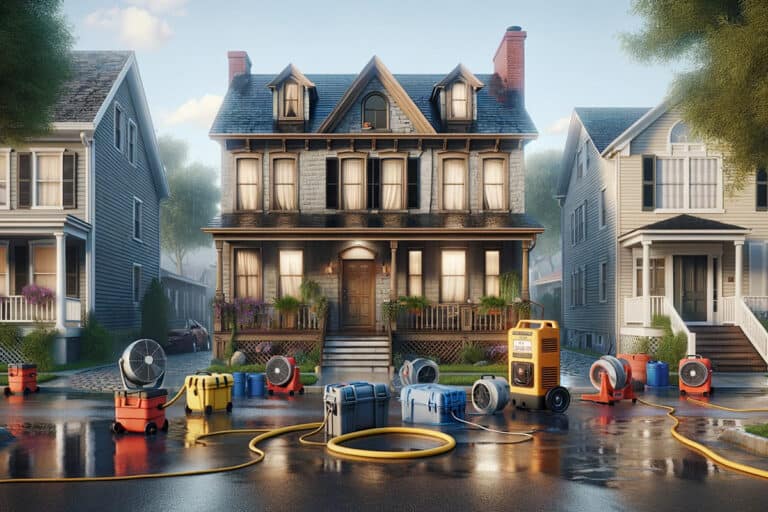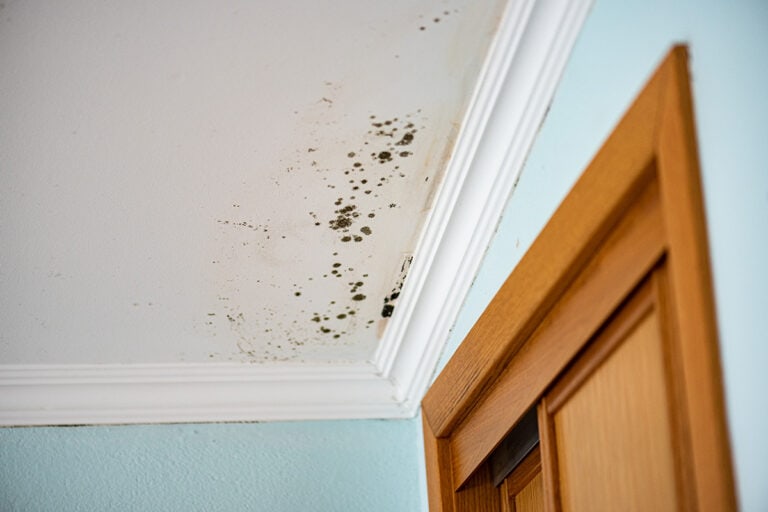Disclosure: I am compensated for purchases made through some links on this site. Click for details.
Repairing structural damage after a disaster demands a comprehensive approach that starts with a thorough assessment of the damage caused by natural forces such as tornadoes, earthquakes, or floods. Understanding the full extent of the destruction is the first step toward planning the restoration of the affected property. This may involve detailed inspections to identify which areas are salvageable and which require complete reconstruction.
Restoring essential services and making structures safe again are top priorities in the aftermath of a natural disaster. Initiating repair processes involves not only fixing the obvious structural damage but also addressing hidden issues such as electrical systems, plumbing, and potential hazards within the building’s interior and exterior. Communication with various stakeholders, including local authorities, insurance companies, and the affected community, is crucial in orchestrating these efforts effectively.
Key Takeaways
- Initial assessments post-disaster are critical for effective restoration.
- The repair process includes both visible fixes and addressing potential internal hazards.
- Effective communication with stakeholders is vital for a coordinated recovery effort.
Understanding the Extent of Damage
Before the recovery process can commence, it is crucial to gauge the extent of damage to structures. Professional engineers conduct a systematic evaluation to determine the safety and integrity of affected buildings and infrastructure.
Conducting a Thorough Assessment
The first step in any post-disaster scenario is to carry out a comprehensive assessment. This involves a meticulous review of the property, with a focus on structural integrity, potential hazards, and overall safety. Qualified individuals—typically structural engineers or emergency management officials—conduct preliminary damage assessments to establish the impact on homes and infrastructure.
Identifying Structural Damage
Once the assessment phase is underway, identifying structural damage becomes a priority. Engineers look for signs of compromise to foundations, load-bearing walls, and support beams. They examine the property for both obvious damages, such as major cracks or collapses, and subtle but critical issues like water infiltration that might not be immediately apparent. Their evaluations determine the scope of repairs needed to restore safety and functionality to damaged structures.
Planning for Reconstruction
The process of reconstruction after a natural disaster is a meticulous phase where compliance with building codes and innovative design converge to ensure future resilience. It requires detailed planning and coordination with local authorities to navigate the complexities of permits and regulations.
Navigating Building Codes and Permits
When embarking on the reconstruction of structures post-disaster, understanding and adhering to local building codes is crucial. These codes dictate the standards for construction and are designed to ensure the safety and durability of buildings. Homeowners and builders must obtain the necessary permits before proceeding with reconstruction efforts. This generally involves submitting detailed plans to local government bodies and potentially working with an engineer to certify that the designs meet code requirements. Failure to comply can lead to significant delays and increased costs.
Designing Structures for Future Resilience
Rebuilding offers the unique opportunity to design structures that are better equipped to withstand future disasters. This entails incorporating resilient building practices and materials that can resist extreme forces. Architects and engineers play crucial roles in reconstruction, ensuring the new structures balance practicality with building code requirements. A focus on resilience can significantly reduce the potential for future structural damage, therefore, strategic rebuild efforts should prioritize robust design principles.
Initiating Repair Processes
Before starting repairs after a natural disaster, it is imperative to engage a licensed professional and ensure the use of suitable building materials. These initial steps are key to effective and safe restructuring of damaged properties.
Securing a Licensed Professional
Hiring a licensed professional is the first crucial step in the process of structural repair. Professionals with the necessary licenses bring expertise that is pivotal in assessing damage accurately and formulating a comprehensive rebuilding strategy. They ensure that repairs meet legal building codes and standards, providing peace of mind to property owners.
Sourcing Appropriate Building Materials
Choosing the right building materials is essential for repair durability and safety. Materials must meet specific standards for the area’s climate and potential natural events. Homeowners should procure materials that provide both strength and longevity to withstand future challenges, guided by input from their chosen licensed professional.
Restoring Essential Services
After a natural disaster, the restoration of electricity and plumbing is critical for emergency services and rehabilitation. Ensuring that homes are water-resistant and adequately insulated is equally vital for safety and comfort.
Electrical and Plumbing System Repairs
Restoring electrical services involves assessing the damage to the wiring and electrical panels and replacing any compromised components. Certified electricians prioritize safety while working to return power swiftly. Plumbing repairs focus on rectifying broken pipes and sewage systems to restore clean water access and adequate sanitation, as outlined in Restoring Normalcy.
Ensuring Water Resistance and Insulation
Repair teams work on making structures water-resistant to prevent future water damage. This involves sealing leaks, reinforcing the envelope of buildings, and sometimes retrofitting with newer, more resilient materials. Proper insulation is reintroduced or upgraded to not only enhance water resistance but also to ensure that buildings maintain temperature efficiently, reducing energy costs.
Repairing Specific Structural Elements
In the aftermath of a natural disaster, addressing the integrity of a home’s structural elements is crucial for safety and durability. The focus must be on critical areas such as the foundation and roofing, as well as the restoration of walls, windows, and doors to ensure a secure living environment.
Fixing Foundations and Roofs
The foundation and roof are vital components that bear the overall structural load of a house. For foundations, one must assess for cracks or shifts and employ methods like sealing or underpinning to restore stability. When repairing roofs, homeowners should replace damaged shingles, tiles, or supports, keeping in mind that all repairs meet current building codes for wind and water resistance.
Restoring Walls, Windows, and Doors
Walls must be inspected for stability; any compromised sections may require reinforcement or complete replacement. The process often involves removing and replacing damaged wall elements including drywall and insulation. When dealing with windows and doors, it is essential to ensure they are properly sealed and function correctly, as they play a key role in the building’s envelope and security. Repairing or replacing window panes, frames, and door structures can prevent further damage from environmental exposure.
Dealing with Property and Environmental Hazards
After a natural disaster, property owners face the challenges of addressing environmental hazards and repairing structural damage. Immediate attention to these issues is critical to prevent further harm to health and safety.
Addressing Mold, Soot, and Odor
Following a natural disaster, mold growth can be a significant concern, especially in damp conditions. Quick action is paramount, as mold can contribute to poor indoor air quality and cause health issues. Soot and odors often accompany fire damage, requiring thorough cleaning and sometimes professional remediation to restore air quality.
Handling Debris and Waste
The process of debris removal must be handled with care, as it often includes hazardous materials. Prioritizing safety and compliance with local regulations, it is vital to sort and dispose of waste properly. The proper disposal of materials not only aids in the recovery process but also helps mitigate environmental impact.
Navigating Insurance and Financial Challenges
After a natural disaster, individuals may face significant insurance and financial hurdles. Understanding the intricacies of insurance policies and seeking available assistance can be critical in managing the recovery process efficiently.
Understanding Insurance Coverage
One must thoroughly review their insurance policy to comprehend the extent of coverage for structural damages. Policyholders need to understand whether they have flood insurance included, as standard policies may not cover flood-related damages. They should contact their insurance company promptly to initiate the claims process, maintaining detailed documentation of all damages.
Seeking Assistance from FEMA
When insurance does not fully cover the costs, aid from the Federal Emergency Management Agency (FEMA) can be a lifeline. FEMA offers assistance for disaster-related expenses that aren’t insured. To access FEMA’s support, one must apply through the agency, providing proof of damages and any insurance claim outcomes related to the disaster.
Implementing Mitigation Measures
Mitigation measures are crucial in strengthening structures against future natural disasters. They often involve retrofitting existing buildings and enhancing infrastructure in vulnerable zones such as flood-prone areas.
Retrofitting Structures
Retrofitting is the process of making modifications to existing buildings to make them more resistant to hazards such as earthquakes, floods, and high winds. This may include reinforcing the foundations or upgrading the construction materials to withstand environmental stresses. Key retrofit techniques include:
- Base isolation systems
- Flexible utility connections
- Reinforced walls and roof connections
Improving Infrastructure in Flood Zones
Infrastructure in flood zones requires careful consideration and enhancement to prevent catastrophic damage. Effective measures might incorporate:
- Elevation of critical facilities above flood levels
- Installation of flood barriers or levees
- Upgrading drainage systems to cope with high water volumes
Adopting these strategies can significantly reduce the impact of natural disasters on communities located in flood-prone areas.
Communication and Community Involvement
In the aftermath of a natural disaster, effective communication and active community involvement are integral to successful rebuilding and restoration efforts. Establishing clear lines of communication ensures residents are informed and resources are properly coordinated, while community support galvanizes a collaborative approach to recovery.
Maintaining Open Communication
Open communication facilitates a transparent exchange of information critical to disaster restoration. Authorities and organizations should provide consistent updates on the recovery process, using various platforms—social media, public meetings, and local media—to reach the whole community. Clear communication about safety measures, rebuilding progress, and available assistance can decrease the likelihood of misinformation and help community members make informed decisions.
Encouraging Community Support for Rebuild
Community involvement in the recovery efforts not only accelerates the rebuilding process but also fosters a sense of unity and resilience. Local groups can identify and prioritize areas of need, such as restoring essential services or repairing public facilities. By mobilizing community-based organizations, the collective know-how and resources can be harnessed to support the rebuilding strategy, ensuring it aligns with the specific requirements and cultural context of the area.
Conclusion
Focusing on property restoration post-natural disaster requires methodical approaches to rebuild homes, businesses, and buildings. Structural engineers and recovery teams need to assess the damage critically and determine priorities for reconstruction to ensure safety and functionality. Practical guidance, such as Resources for Repairing, Retrofitting and Rebuilding offers essential strategies that homeowners and city planners can follow.
In moving towards recovery, the integration of improved building standards and resilience measures is crucial. As evidenced in studies like Disaster recovery and the repairing perspective, long-term planning should aim for constructions that withstand future disasters, reducing the cyclical nature of damage and repair. This goal demands a combined effort from the community and governing bodies.
Finally, understanding the broader impact of natural disasters, beyond immediate physical damage, is essential to aid recovery. The Impacts of Natural Disasters not only manifest in the destruction of the built environment but also lasting socio-economic setbacks. Recovery is a comprehensive process that extends far beyond the physical reconstruction, prompting communities to develop a holistic approach toward sustaining their livelihoods and heritage.




